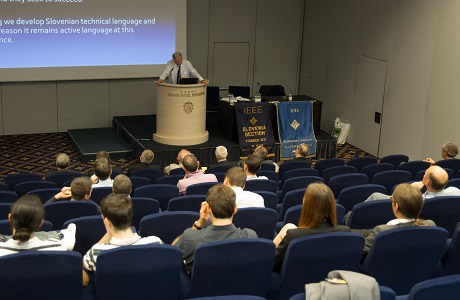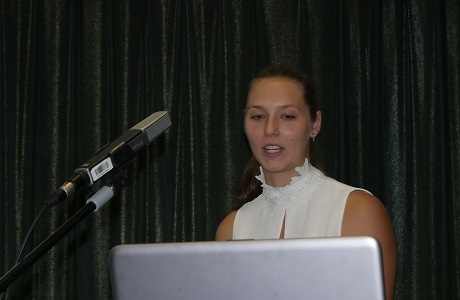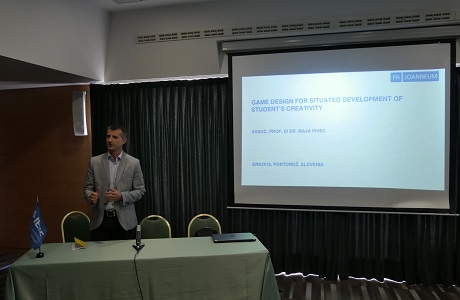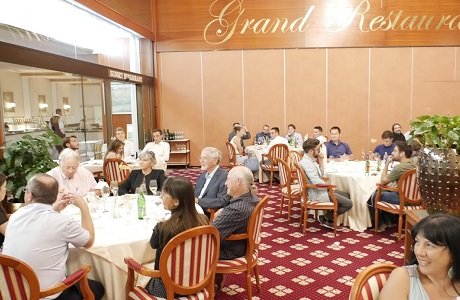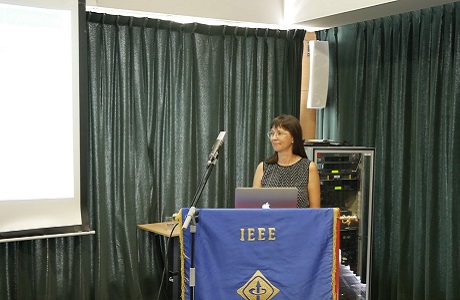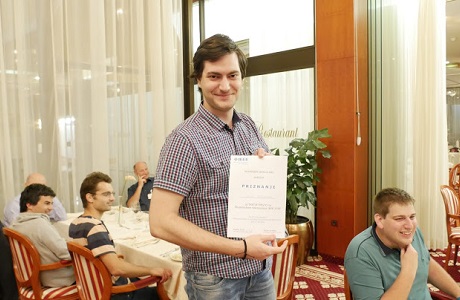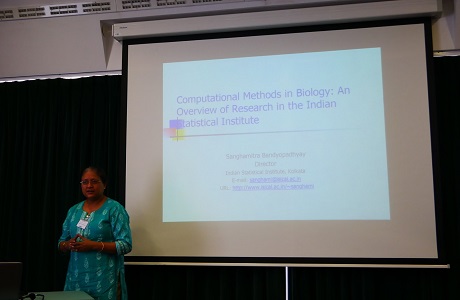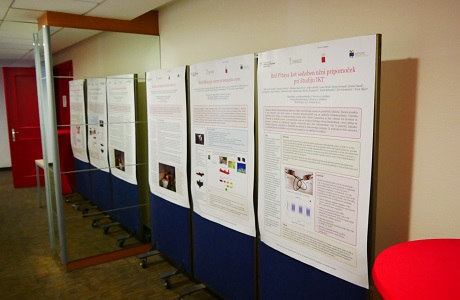ERK 202525. - 26. September 2025
Hotel Bernardin, Portorož
Call for papers: 34th International Electrotechnical and Computer Science Conference ERK 2025
The ERK 2025 conference will be held on September 25-26, 2025 in Congress Center Bernardin, Portorož, Slovenia. The conference is organized by the IEEE Slovenia Section together with Faculty of Electrical Engineering University of Ljubljana and other Slovenian professional societies. The Conference is bilingual, with presentations in English and Slovenian.
| VP - Invited Lectures | CS - Computer Science |
| EL - Electronics | PR - Pattern Recognition |
| TC - Telecommunications | BM - Biomedical Engineering |
| AR - Automatic Control and Robotics | MM - Multimedia |
| SM - Modeling and Simulation | DI - Didactics |
| ME - Power Engineering | ST - Student Papers |
| MT - Measurement | AE - Acoustics and Electroacoustics |
Author info:
- Paper submission deadline extended to: 28. July 2025
- Notification of acceptance: 21. August 2025
- Camera-ready: 4. September 2025
Vabilo na štiriintrideseto mednarodno Elektrotehniško in računalniško konferenco ERK 2025
Konferenca bo potekala v kongresnem centru Bernardin v Portorožu. Na konferenci bo od 25. do 26. septembra 2025 poleg rednih sekcij bogat vzporedni strokovni program v dveh dneh, zato Vas vzpodbujamo, da si vzamete čas in se v tej atmosferi informirate in pogovorite o novostih, trendih in možnosti razvoja naše stroke na specifičnih področjih, za katere in od katerih živite. Vabljena, pregledna in poučna predavanja bodo dopolnjevala osnovni program konference, kjer bodo raziskovalci poročali o svojih dosežkih pred kritičnim strokovnim forumom udeležencev. Delovna jezika sta slovenski, ker se negovanju slovenske tehniške besede ne moremo odpovedati, in angleški, s čimer vabimo vedno več udeležencev iz tujine. Na konferenci bodo zastopana naslednja področja:
|
|
Konferenco organizira Slovenska sekcija IEEE v sodelovanju s Fakulteto za elektrotehniko Univerze v Ljubljani in drugimi strokovnimi društvi. Članek naj obsega 4 strani in je napisan v slovenščini ali angleščini, vendar od avtorjem pričakujemo, da bodo v istem jeziku članek predstavili tudi na konferenci!
Študente SB Ljubljana in SB Maribor vabimo na tekmovanje študentskih prispevkov 2025 Slovenske sekcije IEEE.
Urnik / Schedule

Spremljajoči dogodki
Četrtek / Thursday 25.9.2025
- 9h30 v B Delavnica: Uporabljamo superračunalnike (SLING)
- 14h v B Študentsko tekmovanje / Student Competition (IEEE SB)
Otvoritev / Opening
- 18h30 v/in A Vabljeno predavanje / Invited Lecture
Iztok Bratuž
STMicroelectronics, Ljubljana, Slovenia

Evolution and trends of digital design in low power RF devices
Abstract. The design of RFID devices has significantly changed over the years. In terms of engineering hours per product invested, the dominant component was the analog design in the past, which is mostly addressing the RF communication part. Nowadays, this is not anymore true, and the digital component has taken the lead. Modern RFID devices require complex digital architectures that have one or more MCUs, acceleration circuits for encryption and complex digital communication interfaces.
The main properties that define designs perimeter are performance, size and power consumption. With these in mind, the most optimal solution must be found to guarantee the product’s success. It seems that, with technology getting smaller, the problem is being solved by itself, which in the end is not true. Customers are constantly looking for smaller devices due to limited space in their products. In addition, while the size of the antennas is being reduced as RFID devices are being placed in different wearables, the communication performance with a new product must be improved or at least not impacted.
In this presentation, we will demonstrate the evolution of digital design over the past decades and the demands that a digital designer is facing today in order to successfully complete the design. We will show the latest trends in RFID digital design that are addressing the aforementioned problems.
Dr. Iztok Bratuž has been working in semiconductor industry for the past 20 years. In 2015, he received his Ph.D. degree in electrical engineering from the University of Ljubljana. He is currently working as Digital Design Manager at STMicroelectronics in Ljubljana.
- 19h15 Zdravica ob otvoritvi / Opening ceremony toast
- 20h Restaurant GH Bernardin Konferenčna večerja / Conference Dinner
Petek / Friday 26.9.2025
- 13h15 Taverna Mediteran Kosilo / Lunch
